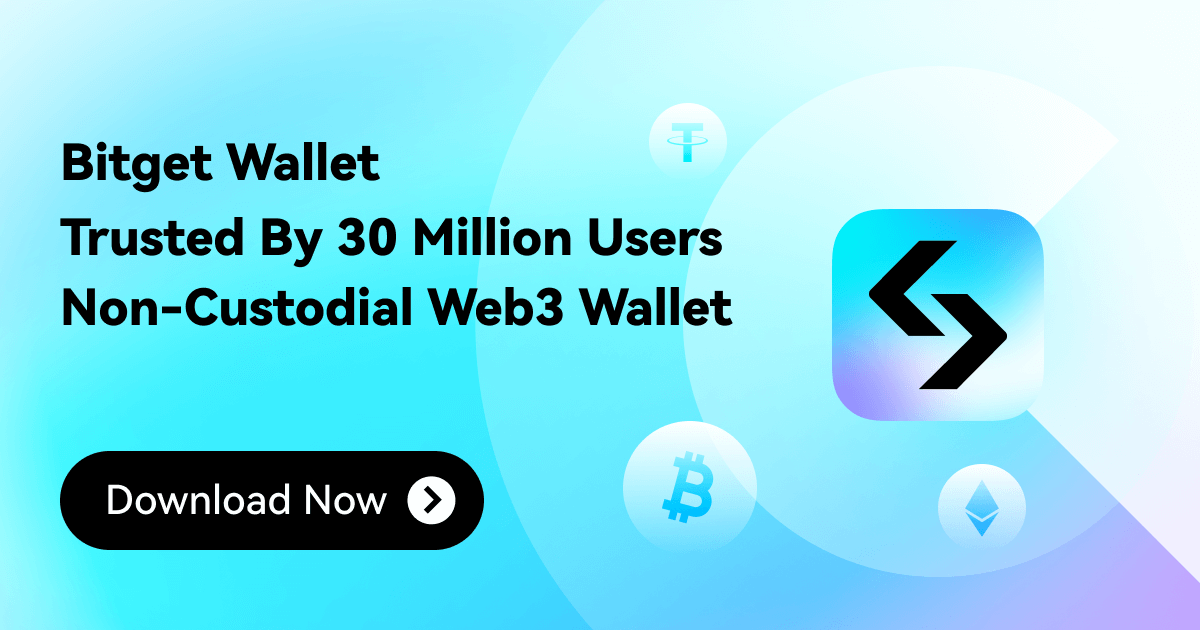What Is Sui?
2024-06-11

Sui is a Layer-1 blockchain platform that streamlines the creation and deployment of decentralized apps. It was created by Mysten Labs, a team of former Meta (Facebook) programmers, with the goal of addressing the scalability and performance constraints of current blockchains.
Unlike other blockchains, which execute transactions sequentially, Sui uses a new parallel execution mechanism. This enables it to process a large number of transactions concurrently, resulting in quicker confirmation times and reduced costs.
The platform also includes Move, a new programming language designed exclusively for creating safe and secure smart contracts. Move's focus on resource-oriented programming helps avoid the typical weaknesses identified in other blockchain languages.
For people interested in becoming engaged with the SUI coin,
Bitget Wallet is a dependable solution. Bitget Wallet's user-friendly design, up-to-date market information, and cross-platform compatibility make it simple to securely store, trade, and manage your SUI tokens.
How Does Sui Work?
Sui's architecture is built on the idea of "objects." Each item represents a digital asset, whether it is a coin, a piece of data, or a sophisticated smart contract. They are owned by certain addresses and can be moved or updated via transactions.
Sui's parallel execution engine allows it to perform transactions involving separate items simultaneously. This greatly increases throughput and scalability when compared to blockchains that use global transaction ordering.
The platform also employs a delegated proof-of-stake (dPoS) consensus method, which selects validators to validate transactions and ensure network security. This paradigm achieves a balance of decentralization and efficiency.
What Makes Sui Unique?
Sui's revolutionary architecture includes a few crucial aspects that set it apart from other blockchain platforms:
Parallel execution: Traditional blockchains handle transactions sequentially, resulting in a bottleneck that restricts scalability. Sui's unique parallel execution engine breaks the mold, leading to the handling of a substantially greater number of transactions per second. This results in quicker confirmation times for consumers and paves the way for a new generation of high-performance dApps.
Move programming language: Smart contracts are the foundation of dApps. Yet, weaknesses in smart contract coding could result in hacks and the loss of user cash. Sui's Move programming language solves this problem by emphasizing safety and security, making it more difficult for developers to introduce bugs into their code.
Object-centric model: Many blockchains fail to handle complex digital assets effectively. Sui's object-centric paradigm makes this process easier by considering each digital asset (token, data, or smart contract) as a separate entity with its own attributes and ownership. Furthermore, Sui's object-centric approach simplifies asset management and ownership for users, resulting in a more seamless experience.
Low transaction fees: High transaction costs may provide a significant barrier to entry for both customers and developers. Sui's efficient design helps maintain minimal transaction costs. This benefit not only opens up the platform to a larger user base but also fosters more experimentation and creativity within the Sui dApp community.
SUI Blockchain’s Language: Move
Move is a Rust-based programming language developed primarily for safe and scalable blockchain applications. It has various benefits over other smart contract languages, making it an important differentiator for the Sui blockchain. Here's a deeper look at the three main characteristics of Move.
Safety: Move promotes building secure code by implementing robust type safety and resource management. While Move’s type safety reduces mistakes and vulnerabilities that might lead to hacking, its resource management ensures that smart contracts have enough resources to run, thereby minimizing the danger of denial-of-service attacks.
Flexibility: Move's modular architecture enables developers to divide complicated programs into smaller, reusable components. This flexibility encourages code reuse and streamlines the development process, allowing developers to create complex dApps more quickly. Plus, Move enables user-defined types and functions, giving developers more freedom to express advanced functionality inside their smart contracts.
Expressiveness: Move provides a strong collection of tools for expressing and manipulating data on the blockchain, thus enabling developers to design unique, feature-rich dApps. Additionally, it works nicely with current Rust libraries and tools, giving developers a broader set of resources to use while developing dApps on Sui.
What Is The Future Potential Of Sui
Sui's revolutionary technology and expanding ecosystem have generated interest in its future possibilities. The platform's emphasis on scalability, security, and developer-friendliness positions it ideally to accommodate a diverse set of use cases, such as:
Gaming: Sui's parallel execution and low fees are ideal for blockchain-based games, where high transaction volumes and fast responses are crucial.
DeFi: Sui's secure Move language and object-centric model enable the development of more sophisticated and secure DeFi applications.
NFTs: Sui's efficient architecture and low fees make it a cost-effective platform for minting, trading, and managing NFTs.
Additionally, Sui's interoperability with the
Ethereum Virtual Machine (EVM) allows for the integration of current Ethereum dApps into the Sui network. This might hasten Sui's acceptance and expand its ecosystem with new applications.
Does Sui Have A Future?
While the future is unknown, Sui's technical achievements and strong community support suggest huge potential. As more developers and users adopt the platform, the
Sui ecosystem is expected to expand and innovate.
Furthermore, Sui's emphasis on tackling the scalability issues that other blockchains face might propel it to the forefront of the rapidly developing Web3 environment. With the potential to transform how people engage with decentralized apps, Sui can become a driving factor in the future of blockchain technology.
Which Crypto Narrative Does Ethereum Sui Leverage?
Sui is consistent with the Web3 narrative: a decentralized internet in which individuals own and manage their data and digital assets. This system enables developers to create creative solutions that are consistent with this goal by providing a more scalable, secure, and user-friendly platform for developing decentralized apps.
In addition, Sui's focus on parallel execution and affordable costs is consistent with the rising need for efficient and accessible blockchain solutions. As more individuals and companies explore the possibilities of decentralized technology, platforms like Sui will play an important role in encouraging mainstream adoption.
Recommended
 No data
No data














